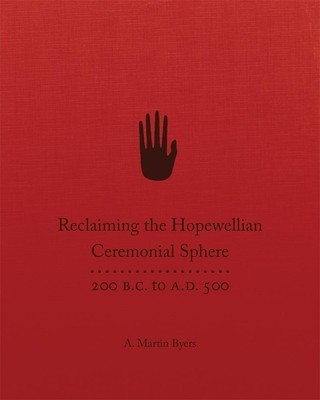
- We will send in 10–14 business days.
- Author: A Martin Byers
- Publisher: University of Oklahoma Press
- ISBN-10: 0806186887
- ISBN-13: 9780806186887
- Format: 20.3 x 25.7 x 3.3 cm, kieti viršeliai
- Language: English
- SAVE -10% with code: EXTRA
Reviews
Description
Multiple Hopewellian monumental earthwork sites displaying timber features, mortuary deposits, and unique artifacts are found widely distributed across the North American Eastern Woodlands, from the lower Mississippi Valley north to the Great Lakes. These sites, dating from 200 b.c. to a.d. 500, almost define the Middle Woodland period of the Eastern Woodlands. Joseph Caldwell treated these sites as defining what he termed the "Hopewell Interaction Sphere," which he conceptualized as mediating a set of interacting mortuary-funerary cults linking many different local ethnic communities. In this new book, A. Martin Byers refines Caldwell's work, coining the term "Hopewell Ceremonial Sphere" to more precisely characterize this transregional sphere as manifesting multiple autonomous cult sodalities of local communities affiliated into escalating levels of autonomous cult sodality heterarchies. It is these cult sodality heterarchies, regionally and transregionally interacting--and not their autonomous communities to which the sodalities also belonged--that were responsible for the Hopewellian assemblage; and the heterarchies took themselves to be performing, not funerary, but world-renewal ritual ceremonialism mediated by the deceased of their many autonomous Middle Woodland communities. Paired with the cult sodality heterarchy model, Byers proposes and develops the complementary heterarchical community model. This model postulates a type of community that made the formation of the cult sodality heterarchy possible. But Byers insists it was the sodality heterarchies and not the complementary heterarchical communities that generated the Hopewellian ceremonial sphere. Detailed interpretations and explanations of Hopewellian sites and their contents in Ohio, Illinois, Indiana, and Georgia empirically anchor his claims. A singular work of unprecedented scope, Reclaiming the Hopewellian Ceremonial Sphere will encourage archaeologists to re-examine their interpretations.
EXTRA 10 % discount with code: EXTRA
The promotion ends in 22d.11:17:54
The discount code is valid when purchasing from 10 €. Discounts do not stack.
- Author: A Martin Byers
- Publisher: University of Oklahoma Press
- ISBN-10: 0806186887
- ISBN-13: 9780806186887
- Format: 20.3 x 25.7 x 3.3 cm, kieti viršeliai
- Language: English English
Multiple Hopewellian monumental earthwork sites displaying timber features, mortuary deposits, and unique artifacts are found widely distributed across the North American Eastern Woodlands, from the lower Mississippi Valley north to the Great Lakes. These sites, dating from 200 b.c. to a.d. 500, almost define the Middle Woodland period of the Eastern Woodlands. Joseph Caldwell treated these sites as defining what he termed the "Hopewell Interaction Sphere," which he conceptualized as mediating a set of interacting mortuary-funerary cults linking many different local ethnic communities. In this new book, A. Martin Byers refines Caldwell's work, coining the term "Hopewell Ceremonial Sphere" to more precisely characterize this transregional sphere as manifesting multiple autonomous cult sodalities of local communities affiliated into escalating levels of autonomous cult sodality heterarchies. It is these cult sodality heterarchies, regionally and transregionally interacting--and not their autonomous communities to which the sodalities also belonged--that were responsible for the Hopewellian assemblage; and the heterarchies took themselves to be performing, not funerary, but world-renewal ritual ceremonialism mediated by the deceased of their many autonomous Middle Woodland communities. Paired with the cult sodality heterarchy model, Byers proposes and develops the complementary heterarchical community model. This model postulates a type of community that made the formation of the cult sodality heterarchy possible. But Byers insists it was the sodality heterarchies and not the complementary heterarchical communities that generated the Hopewellian ceremonial sphere. Detailed interpretations and explanations of Hopewellian sites and their contents in Ohio, Illinois, Indiana, and Georgia empirically anchor his claims. A singular work of unprecedented scope, Reclaiming the Hopewellian Ceremonial Sphere will encourage archaeologists to re-examine their interpretations.


Reviews